Cusworth Hall and Park, Doncaster – History and Profile
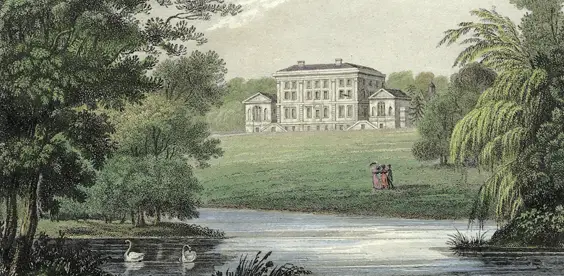
Place-name evidence suggests an Anglo-Saxon origin for the settlement of Cusworth, Cuthsa’s enclosure, and an early fourteenth century document mentions a ‘capital messuage’ (large house) at Cusworth.
The family associated with the present house and its parkland from 1669 until 1961 were the Wrightsons who became the Battie-Wrightsons. William Wrightson (1676-1760) was the owner responsible for the building of the hall that stands today and for initiating changes to the grounds. Between 1726 and 1735 William Wrightson enlarged the gardens by building high brick and stone walls to contain a bowling green, flower garden, hall garden, greenhouse garden, kitchen garden, a lower garden called Low Piece and an orchard. These became known as the Walled Gardens.
Master craftsmen were involved
In 1726 he built a summer house (which became the Bowling Pavilion). Foundations for the present hall were dug in 1740 and the previous hall dismantled, some materials being used in the construction of other buildings such as the Head Gardener’s house and a bothy. George Platt, the Rotherham mason-architect, was responsible for the initial work on the new hall and on his death in 1742 his son John took over the contract. William Wrightson was apparently extremely keen to keep a watchful eye on the building work and it is alleged that, ‘from a bosun’s chair fixed to the scaffolding of the partly constructed house, he daily gave instructions and supervision’.
On completion of the central hall, William’s son-in-law, John Battie, said that he considered it was ‘too tall for its length’ and consequently it was proposed to add two wings. The design for these was given to James Paine, the Palladian-style architect. Between 1750-55 various master craftsmen were involved with work on the interiors including Joseph Rose, noted for his stucco plasterwork, and artist Francis Hayman, once a student of Hogarth, who painted the Good Samaritan picture and The Ascension scene on the vaulted ceiling of the chapel. The hall was completed in 1755 with costs amounting to £20,000.
Cusworth Hall & Park: The ‘Naturalistic’ Parkland
It was John Battie (who married Isabella Wrightson, the only surviving child and heiress of William) who commissioned Richard Woods, the landscape gardener from Chertsey in Surrey, to make improvements to the 100 acre grounds around the new Cusworth Hall in 1761. Woods produced plans and memoranda for the creation of a ‘naturalistic’ landscaped park at Cusworth to be supervised by his foreman, Thomas Colia (spelt in various ways).
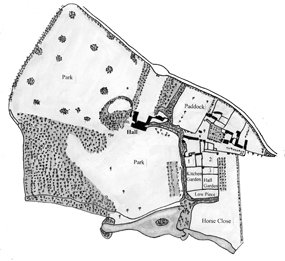 There are precise instructions for digging (‘grubbing up’), earth moving, tree planting, hedge laying, the making of gravel walkways and coach roads and the construction of the lakes, a bridge, a grotto-like boathouse and a cascade. Richard Woods marked out his design with the aid of numbered stakes. Thomas Colia was given instructions for all aspects of the work including what and where to plant in detailed memoranda exemplified by the following:
There are precise instructions for digging (‘grubbing up’), earth moving, tree planting, hedge laying, the making of gravel walkways and coach roads and the construction of the lakes, a bridge, a grotto-like boathouse and a cascade. Richard Woods marked out his design with the aid of numbered stakes. Thomas Colia was given instructions for all aspects of the work including what and where to plant in detailed memoranda exemplified by the following:
Stake No 3 is the Center of a Clump wch may be about 60 yards Long. The middle of which for 20 yards Should be Deciduous plants and Each End firrs, but of Different Sorts for Example one End may be Scotch & the other Spruce or any Other two Sorts, and In front of this Clump Plant larches for 25 yards Long.
Woods selected existing trees, where suitably placed in clumps within the park, to furnish the new landscape thus giving an immediate ‘maturity’. He was keen that his plans were followed meticulously, informing Colia that ‘a great deal [is] to be observed, and [that] great Care must be taken to Exicute it properly’.
A wide variety of trees were planted in clumps and open groves – cypress, red cedar, beech, elm, chestnut, larch, tulip, fir and pine interspersed with evergreens and underplanted with roses and honeysuckle intended to grow amongst them.
What a task with little or no mechanisation!
In creating the ‘naturalistic’ landscape a large amount of time and money were spent on the formation of a concave-convex slope between the hall and the artificial lakes. Colia was told ‘to work the lawn… in a gentle Concave Slope from the top line of the Stakes Down to the lower line and then Reverse it to a Convex, for a Considerable Space, and then fall into the natural Concave below down to the river’.
What a task with little or no mechanisation! Woods insisted in having the ground dug ‘about 2 spitt [spade lengths] deep where the Plough Cannot go’ to give the trees and shrubs a good start.
After the levelling, planting and turfing came the construction, between February 1763 and November 1764, of three lakes, formed from the stream called Rose Dyke. A boathouse, designed as an arch, was to give the effect of a cave hidden among the thick foliage. The individual sections of the arch were made of artificial ‘stone’ produced from a mould to look ‘very rough and shaggy’.
Thirteen types of apple trees
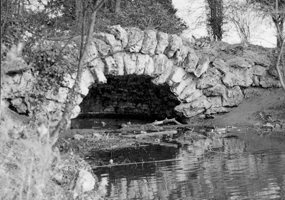 Woods told Colia to ‘cover the top of the arch with Earth’ to make it resemble ‘a Natural Swelling Hill’ plant it with fir trees and position a seat ‘at least 15 feet Back from the front of the arch’.8 Between the upper water or ‘Great River’ and the middle pond a cascade was built to give the impression of a natural rugged waterfall.
Woods told Colia to ‘cover the top of the arch with Earth’ to make it resemble ‘a Natural Swelling Hill’ plant it with fir trees and position a seat ‘at least 15 feet Back from the front of the arch’.8 Between the upper water or ‘Great River’ and the middle pond a cascade was built to give the impression of a natural rugged waterfall.
Fallow deer had grazed the old park at Cusworth and Woods instructed that the plantings should be protected from the deer by putting stakes about nine feet high all round the clumps and running two or three rows of rope round them so that the deer could not creep under. Deer remained at Cusworth until the Second World War when they disappeared one night after the park gates were left open.
An indication of eighteenth century planting can be obtained from an order, supplied by J and G Perfect of Pontefract, to Cusworth in 1785 totalling £7-5s-7d. Trees and shrubs purchased include birch, ‘Lord Weymouth’ pines, viburnum, laurel, lilac, box, acacia, juniper, ‘South Sea Thea trees’, almond, holly, pyracantha, guelder rose and sea buckthorn. Flowering plants obtained were jasmine, hypericum, myrtle, honeysuckle, lychnidea, cinquefoil and roses. Thirteen types of apple trees, four kinds of cherry trees, eight types of pears and four species of plums were, no doubt, destined for the kitchen garden.
Cusworth Hall & Park: Two Hundred Years on
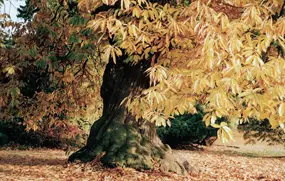 The basic layout, designed by Richard Woods, changed little over the next two centuries and the same family, becoming the Battie-Wrightsons, owned the hall and its grounds. As with many country estates, the commissioning of the estate by the military during the Second World War severely disrupted maintenance. When Robert Battie-Wrightson, the last squire to live at Cusworth, died in 1952 the hall was in a dilapidated state. With heavy death duties to be paid, the contents of the hall were sold at auction in October of that year. The building and its grounds were eventually purchased by Doncaster R D C in 1961 for £7,500 and it became a museum in 1967. Ownership transferred to Doncaster M B C in 1974 and the museum’s theme became South Yorkshire life.
The basic layout, designed by Richard Woods, changed little over the next two centuries and the same family, becoming the Battie-Wrightsons, owned the hall and its grounds. As with many country estates, the commissioning of the estate by the military during the Second World War severely disrupted maintenance. When Robert Battie-Wrightson, the last squire to live at Cusworth, died in 1952 the hall was in a dilapidated state. With heavy death duties to be paid, the contents of the hall were sold at auction in October of that year. The building and its grounds were eventually purchased by Doncaster R D C in 1961 for £7,500 and it became a museum in 1967. Ownership transferred to Doncaster M B C in 1974 and the museum’s theme became South Yorkshire life.
Cusworth Hall & Park: Revival
The grant from the Heritage Lottery Fund, supported by Doncaster MBC, is breathing new life into both Cusworth Hall Museum and its eighteenth century designed landscape. Work on the grounds commenced at the beginning of 2004 with the felling of trees and the clearing of overgrown shrubberies. The water features (lakes, cascade, bridge and boathouse) and the parkland, designed by Richard Woods in the 1760s, are being restored to reflect his original concept and the fashion of the time. Great care is being taken at every stage to protect the wildlife within the park.
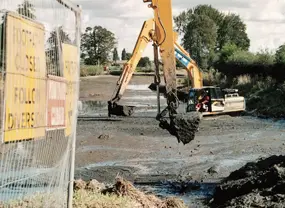 Paths, benches and car parking facilities are also to be upgraded. A garden terrace is to be created near the hall in a style typical of the early twentieth century. The old walled kitchen garden (to which there is no public access at present) is to have its walls repaired. Additional funding will be needed to restore the area within the walls – the bowling green, the kitchen garden and the orchard. The eighteenth century summer house/bowling pavilion survives near the old bowling green. It would be wonderful to see this area returned to its former uses to complete the picture of how the estate operated in the past. South Yorkshire does not have an eighteenth century bowling green (and only one working kitchen garden) and this area, once restored, could be a unique feature if it too could be funded.
Paths, benches and car parking facilities are also to be upgraded. A garden terrace is to be created near the hall in a style typical of the early twentieth century. The old walled kitchen garden (to which there is no public access at present) is to have its walls repaired. Additional funding will be needed to restore the area within the walls – the bowling green, the kitchen garden and the orchard. The eighteenth century summer house/bowling pavilion survives near the old bowling green. It would be wonderful to see this area returned to its former uses to complete the picture of how the estate operated in the past. South Yorkshire does not have an eighteenth century bowling green (and only one working kitchen garden) and this area, once restored, could be a unique feature if it too could be funded.
Location: Cusworth Lane, Doncaster, off the A638 Wakefield to Doncaster Road.
Ownership: Doncaster Metropolitan Borough Council.
Opening Times & Charges: Cusworth Hall (now the Museum of South Yorkshire Life) and grounds open Mon-Fri 10am – 5pm; Sat 11am-5pm; Sun 11am-5pm (4pm in January & December).
Admission is free.
Tel: 01302 782342.
Website: doncaster.gov.uk/museums.
Facilities: Car parking. Tearoom, museum shop.
Article taken from ‘Historic Parks and Gardens in and Around South Yorkshire’ by Melvyn Jones, £12.99 from Pen & Sword Books
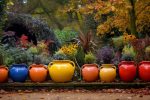
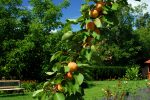
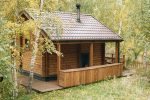
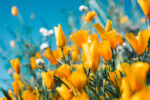






The Grade II listed area of the walled gardens at Cusworth Hall, i.e. terrace, bowling green and pavilion, and rose garden, have, since 2013, been gradually restored by generous donations from the Cusworth Hall Gardens Trust, an independent charitable trust (registration number 1152888).